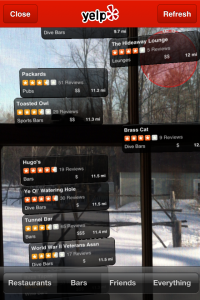Blackberry’s new Z10 phone sales have set records in Canada and the UK – two of the biggest markets for Research in Motion (now re-branded as simply Blackberry). It still remains to be seen whether next week’s U.S. release will make any kind of splash. The biggest problem for Blackberry is that many of its former enterprise users have switched to other smartphone platforms. Many companies have instituted bring your own device (BYOD) plans, in which fewer restrictions are placed on mobile devices that are used by employees. Workers want to choose how, where and when they work in order to balance personal and professional commitments – and IT departments have agreed to support them. Most of them brought their own iPhones, Droids and Galaxies, but not Blackberries.
Since Blackberry’s traditional fan base, the business user, is no longer locked in, the company is pivoting towards a different market segment: creative, collaborative multi-taskers. Let’s ignore the company’s universally derided Superbowl ad, which showed us a montage of nonsensical problems that are supposedly solved by the Blackberry, and then tells us that these are all the things the phone can’t do. Instead, let’s consider the brand’s Keep Moving campaign, an exercise in crowdsourced consumer engagement. Blackberry tapped three artists – a musician, a writer and a film maker – with strong fan followings, prominent social media profiles, and/or new projects to promote this year.
Blackberry taps three artists to influence their fanbase
Alicia Keys, the brand’s “Global Creative Director,” is a former Blackberry user who has been lured back, a fact that the company has made sure to emphasize. Unfortunately, she has been suspected of continuing to Tweet from her iPhone and was photographed with several iPhones, in addition to her Blackberry, on her dressing table. Oops.
She’s also promoting a world tour. Keys has previously used crowdsourced Instagram photos as part of her music videos. Despite the unavailability of this popular app on the new Blackberry phone, Keys’ project, called Your City Your Video, is asking for fan photos – some of which will probably be taken with an iPhone and altered with Instagram filters. She will include these in videos, unique to each city, used on her current tour.
Neil Gaiman, a popular fantasy author and screenwriter from the UK, has a large following on his active Twitter account, and prior experience with crowdsourcing projects. In 2009, he worked with BBC Audiobooks America to provide the seed for a Twitter-based story using only Tweets submitted by Gaiman’s followers. He’s also married to Amanda Palmer, who has considerable experience with crowdsourcing and crowdfunding. His new book, The Ocean at the End of the Lane, will be released in June.
Gaiman’s project is A Calendar of Tales, in which he gave to the Twitterverse a series of story prompts based on the months of the year, for example: “Why is January so dangerous?” Gaiman wrote one story for each month, posted the stories for download on Blackberry’s site and asked fans to illustrate them. The illustrations are currently featured on Blackberry’s website and will be published in a calendar and an e-book. Gaiman also recorded himself reading the stories and made the audio files available for free, hoping to attract film makers.
The last Keep Moving project will involve a professional film maker, Robert Rodriguez, who jumps between producing cult favorites like El Mariachi to making children’s movies like the popular Spy Kids franchise. He is also known for a series of short documentaries about film making and has recently created a new cable channel on Comcast called El Rey. His project launches March 18, and reportedly will ask fans to describe a weapon, draw a monster and play a small part in a new film. Rodriguez also has some experience with crowdsourcing, having asked for fan contributions for character ideas and plotlines for Heavy Metal, an animated film still in production. He is currently rolling out promotion for a sequel to Machete, due to be released in September.
Will Gen X come back to Crackberry?
The celebrities that Blackberry chose for this campaign are more Gen X than cutting edge. Robert Rodriguez, along with Quentin Tarantino, was first making violent movies with cynical antiheroes back in the 1990s. Neil Gaiman earned a legion of fans with the Sandman comics back in the 80s and 90s. Alicia Keys has been making mainstream hip hop music since 2001. Do you see a trend? All of these artists gained popularity when Gen Xers were in their twenties and early thirties – which is also when they fell in love with the first smartphone on the market, the Blackberry, in 2002.
Generation X is a small cohort, wedged between Boomers and Millennials. I’m not sure they’ll be enough to put Blackberry on top again, but perhaps it will get them to third place, which is their goal for now. What do you think? Let me know in the comments.

















